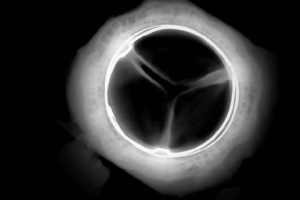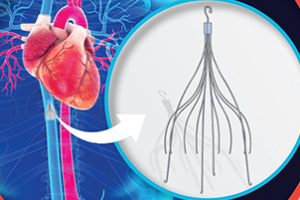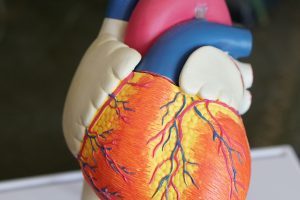The heart never takes a break. The heart is a strong muscle that never stops exercising, not for a minute. Every minute it needs blood, nourishment and oxygen. At Amarillo Heart Institute, we understand the importance of keeping your heart healthy and functioning at its best. We believe that a healthy heart is the foundation of a healthy life, and our goal is to provide you with all you need to achieve optimal heart health, a happier heart.
Valve Replacement
Valve replacement is a surgical procedure used to treat heart valve disease by replacing a damaged or diseased heart valve with a new one. There are two types of heart valve replacement surgery: mechanical valve replacement and biological valve replacement.
Mechanical valve replacement involves using a prosthetic valve made of materials such as metal, plastic, or ceramic. Mechanical valves are durable and can last for many years, but patients who receive them need to take blood-thinning medications for the rest of their lives to prevent blood clots from forming on the valve.
Biological valve replacement involves using a valve made from animal tissue, such as from a pig or cow, or from human tissue. Biological valves are less durable than mechanical valves and may need to be replaced after 10 to 15 years, but patients who receive them do not need to take blood-thinning medications.

Here are the different types of valve replacement for each valve in the heart:
Aortic Valve Replacement: The aortic valve is the valve that connects the left ventricle of the heart to the aorta, which is the main artery that carries oxygen-rich blood to the rest of the body. Aortic valve replacement can be performed using either a mechanical or biological valve. The choice of valve depends on the patient’s age, overall health, and other factors.
Mitral Valve Replacement: The mitral valve is located between the left atrium and left ventricle of the heart. Mitral valve replacement can also be performed using either a mechanical or biological valve.
Tricuspid Valve Replacement: The tricuspid valve is located between the right atrium and right ventricle of the heart. Tricuspid valve replacement is less common than aortic or mitral valve replacement and is usually done as part of another cardiac surgery.
Pulmonary Valve Replacement: The pulmonary valve is located between the right ventricle of the heart and the pulmonary artery. Pulmonary valve replacement is most commonly performed in children or young adults with congenital heart defects, but it can also be done in adults with certain conditions.
In addition to surgical valve replacement, transcatheter valve replacement (TAVR) is a newer, minimally invasive procedure used to replace a heart valve. In this procedure, a replacement valve is inserted through a catheter and guided to the heart, avoiding the need for open-heart surgery. Transcatheter valve replacement is typically used for patients who are at high risk for traditional valve replacement surgery.

Here are the different types of valve replacement for each valve in the heart:
Aortic Valve Replacement: The aortic valve is the valve that connects the left ventricle of the heart to the aorta, which is the main artery that carries oxygen-rich blood to the rest of the body. Aortic valve replacement can be performed using either a mechanical or biological valve. The choice of valve depends on the patient’s age, overall health, and other factors.
Mitral Valve Replacement: The mitral valve is located between the left atrium and left ventricle of the heart. Mitral valve replacement can also be performed using either a mechanical or biological valve.
Tricuspid Valve Replacement: The tricuspid valve is located between the right atrium and right ventricle of the heart. Tricuspid valve replacement is less common than aortic or mitral valve replacement and is usually done as part of another cardiac surgery.
Pulmonary Valve Replacement: The pulmonary valve is located between the right ventricle of the heart and the pulmonary artery. Pulmonary valve replacement is most commonly performed in children or young adults with congenital heart defects, but it can also be done in adults with certain conditions.
In addition to surgical valve replacement, transcatheter valve replacement (TAVR) is a newer, minimally invasive procedure used to replace a heart valve. In this procedure, a replacement valve is inserted through a catheter and guided to the heart, avoiding the need for open-heart surgery. Transcatheter valve replacement is typically used for patients who are at high risk for traditional valve replacement surgery.
Valve Replacement Surgery: Procedure, Process, and Recovery
Valve replacement surgery is typically performed in a hospital setting, specifically in the operating room. The surgery is usually performed under general anesthesia, which means the patient is asleep and not aware of what is happening during the procedure.
Valve replacement surgery is a complex procedure that typically involves a team of specialized healthcare professionals, including a cardiac surgeon, anesthesiologist, and specialized nurses and technicians. The procedure can take several hours to complete, depending on the type of valve being replaced and the patient’s individual circumstances.
After the surgery is completed, the patient is typically moved to a cardiac intensive care unit (ICU) where they can be closely monitored for several days. During this time, healthcare professionals will closely monitor the patient’s vital signs, heart function, and recovery progress. Depending on the individual patient’s condition, they may need to stay in the hospital for several days to several weeks before being discharged home.
Overall, valve replacement surgery is a major surgical procedure that requires specialized expertise and care, and it is typically only performed in specialized cardiac centers with experienced healthcare teams.










